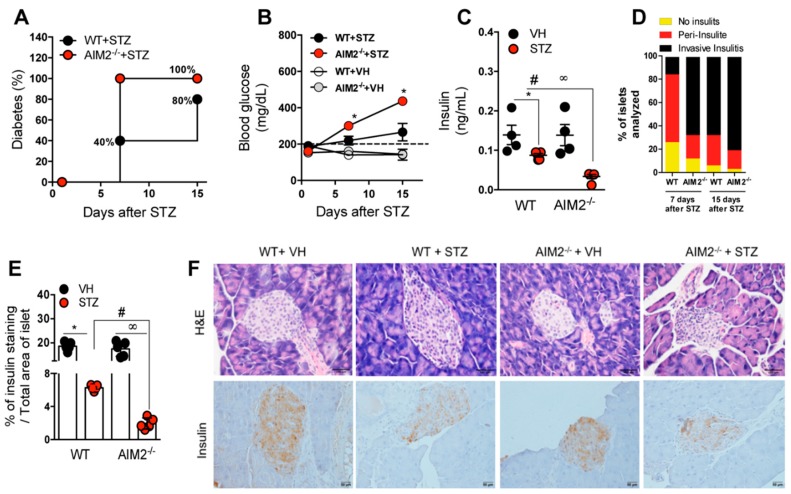Figure 2.
Deficiency of the AIM2 receptor accelerates Type 1 diabetes onset. The WT and AIM2−/− mice were injected with STZ (40 mg/kg) or a vehicle solution (VH, non-diabetic, 0 days after STZ) for five consecutive days, and clinical parameters were evaluated. (A) Incidence of diabetes. (B) Blood glucose levels in the WT and AIM2−/− mice at 0, 7 and 15 days after the STZ injections. (C) Insulin levels assessed by ELISA in the serum of the WT and AIM2−/− mice at 15 days after the STZ injections. (D) Score of inflammatory infiltrates in the islets of the WT and AIM2−/− mice at 7 and 15 days after the STZ injections. (E) Quantification of the insulin staining in the pancreatic tissue of the WT and AIM2−/− mice at 15 days after the STZ injections. (F) Histopathology and insulin staining, assessed by immunohistochemistry in the pancreatic tissue of the WT and AIM2−/− mice at 15 days after the STZ injections. The values are expressed as the mean ± SD. The results are considered statistically significant when p < 0.05 (*; #, ∞). N = 3–6 animals per group. Significant differences between the groups were determined by one-way ANOVA, followed by Tukey’s multiple-comparison test.

